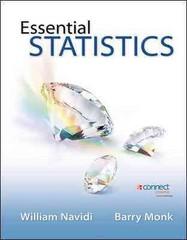Question
An electric utility is going to use a block-pricing schedule. They plan to charge P 1 for the first Q 1 units and P 2
An electric utility is going to use a block-pricing schedule. They plan to charge P1 for the first Q1 units and P2 for the subsequent units. The Q2 units sold at P2 are the total units sold, QT, minus Q1, the number of units sold at P1. The inverse demand curve is P = $100 - Q, and the marginal and average cost is $40.
a) Calculate the profit-maximizing prices and quantities under block-pricing, P1, P2, Q1, Q2, and QT.
b) Calculate the consumer surplus and the producer surplus under block-pricing.
c) Calculate the profit-maximizing price and quantity under uniform linear pricing of a monopoly, and the corresponding welfare.
d) Calculate the competitive equilibrium price and quantity, and the corresponding welfare, assuming that perfectly competitive producers have the same production cost. Is this a plausible assumption? Why or why not?
Ans & Explanations for b), c), and d).
Step by Step Solution
There are 3 Steps involved in it
Step: 1

Get Instant Access to Expert-Tailored Solutions
See step-by-step solutions with expert insights and AI powered tools for academic success
Step: 2

Step: 3

Ace Your Homework with AI
Get the answers you need in no time with our AI-driven, step-by-step assistance
Get Started


